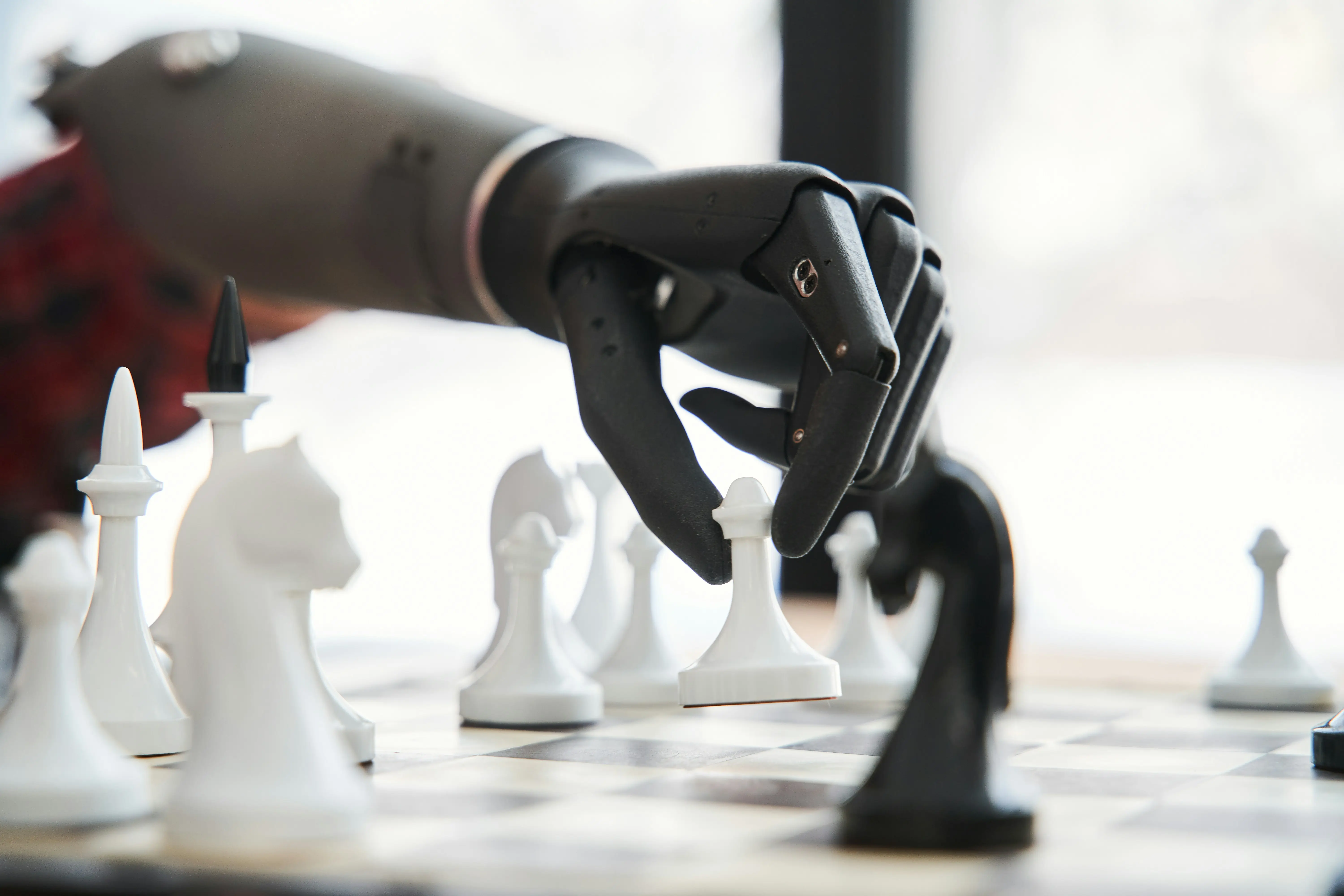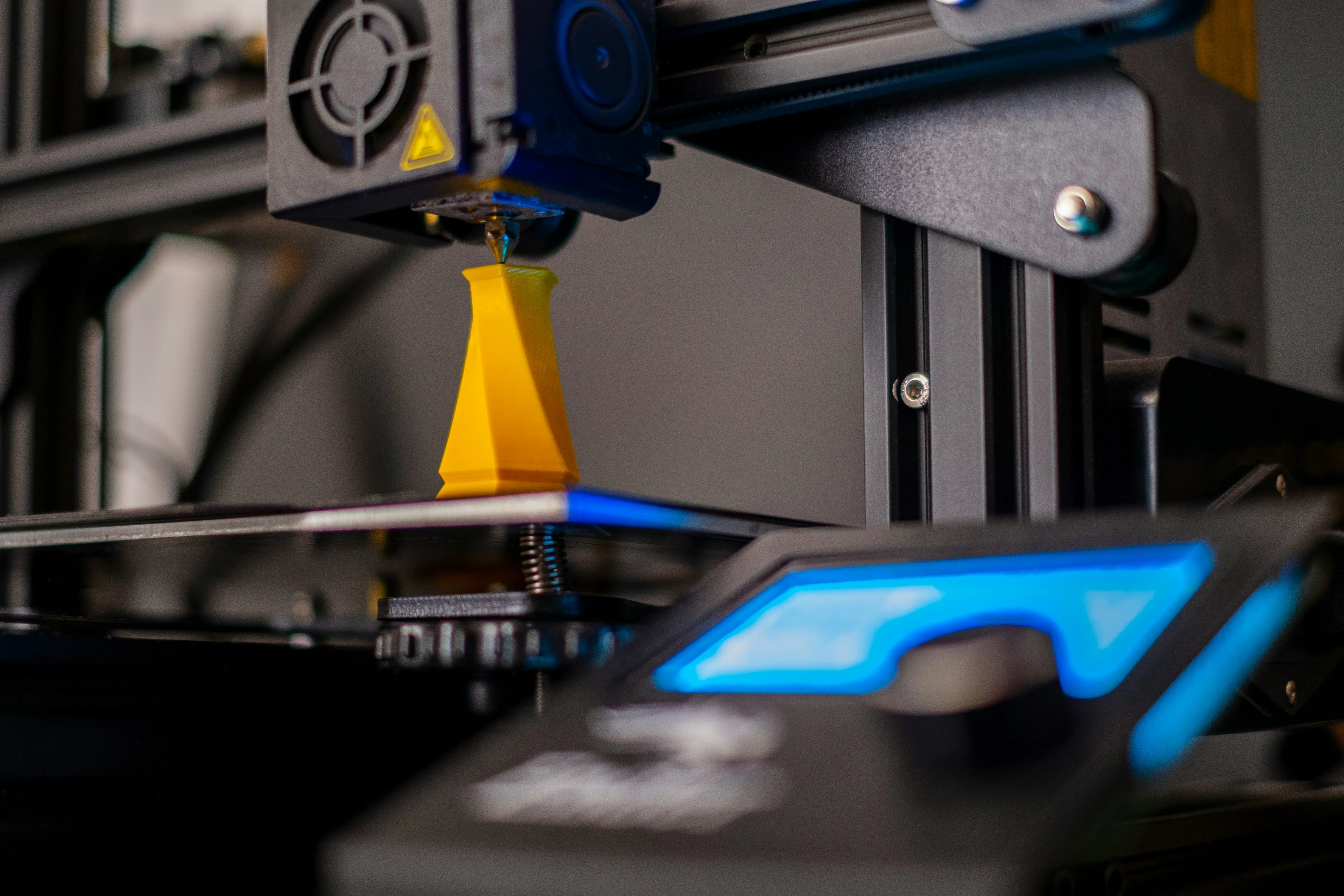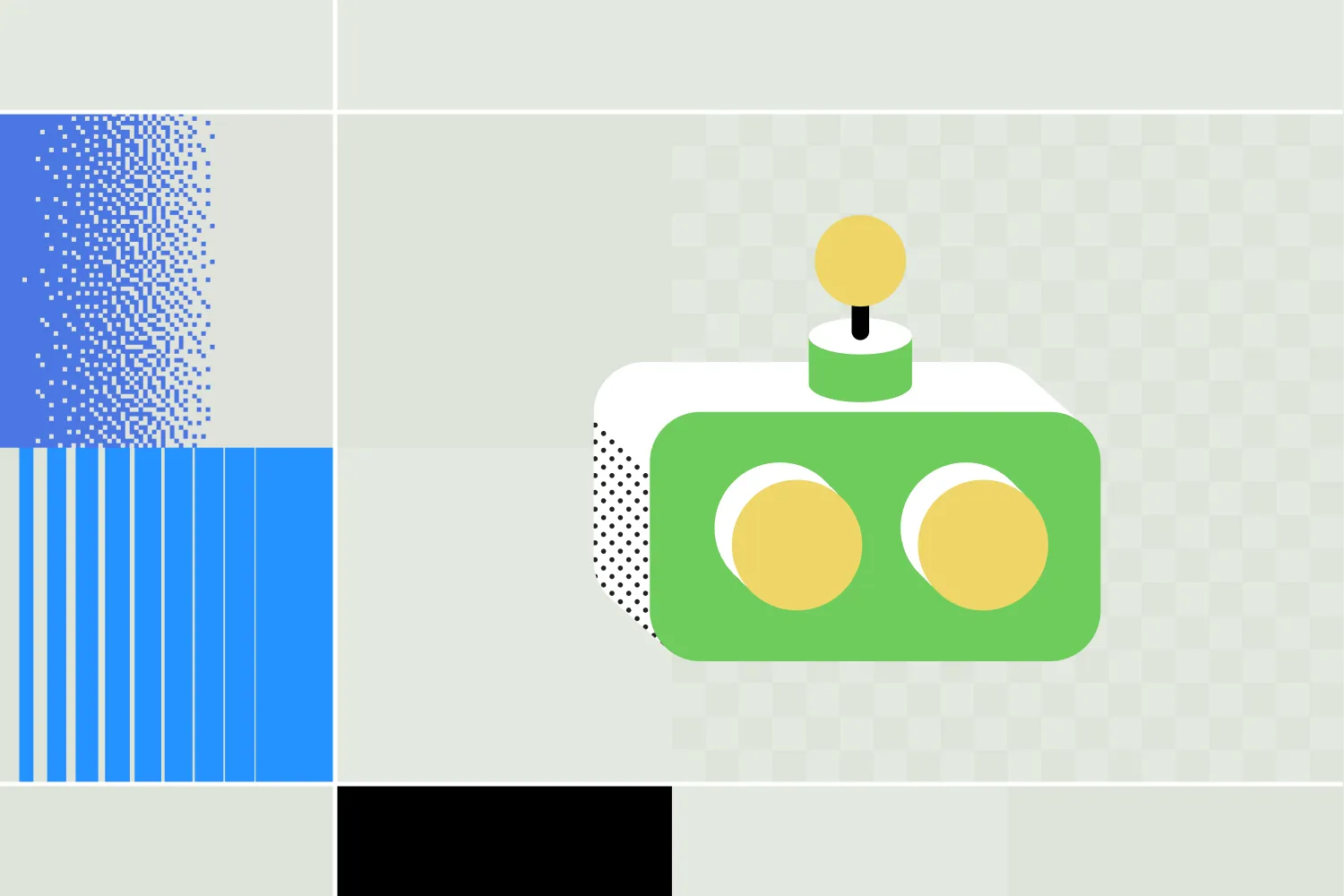- AIエージェントは、現在の入力に反応する単純な反射システムから、計画・学習・複雑なタスクの調整を行う高度なエージェントまで、さまざまな分野で活躍しています。
- 単純反射型エージェントは目の前の状況だけで行動しますが、モデルベース反射型エージェントは内部モデルを使って環境の変化を追跡・予測し、より高度な判断を行います。
- マルチエージェントシステムでは、複数のAIエージェントが協力または競争し合い、自動運転車の交通調整や複雑なサプライチェーン管理などの高度な応用が可能になります。
AIエージェントは近年急速に発展しています。その技術や機能の多様化により、現在では多くの種類のAIエージェントが存在します。
AIエージェントは、タスクを実行するソフトウェアです。一般的なチャットボットとは異なり、ユーザーの代わりに行動を起こすことができます。
AIエージェントには、スマート温度計や自動運転車、チャットインターフェースを持つエージェントなど、さまざまなものがあります。これらすべてのユースケースは、AIエージェントの7つの主なカテゴリのいずれかに分類されます。 この記事では、AIエージェントの主な7種類と、実際のAIエージェントの例を紹介します。
1. 単純反射型エージェント
単純反射型エージェントは、環境からの現在の入力だけに基づいて意思決定を行うAIシステムです。
このエージェントは条件-行動ルールのセットを使い、観測した入力に特定の反応を割り当てます。環境で特定の状態を検知すると、対応するルールを実行します。
このエージェントには記憶や内部モデルがなく、すべての判断を現在の入力だけで行える完全に観測可能な環境でのみ効果的に動作します。
単純反射型エージェントの例
- 寒いときに暖房をつけるサーモスタット
- 壁にぶつかったら方向転換するロボット(猫を乗せたルンバなど)
- ユーザーが「Hi」と言うと「Hello!」と返す基本的なチャットボットです
.webp)
2. モデルベース反射型エージェント
モデルベース反射型エージェントは、現在の入力と内部モデルの両方に基づいて意思決定を行うAIエージェントです。
単純反射型エージェントと異なり、このタイプは環境の状態を時間とともに記録します。内部モデル(世界の仕組みに関する情報)を使い、環境が完全に観測できない場合でも判断を補います。
新しい入力を受け取ると内部状態を更新し、条件-行動ルールを参照し、現在の知覚と過去の経験の両方に基づいて最適な反応を選択します。
モデルベース反射型エージェントの例
- 部屋のレイアウトを記憶し、すでに掃除した場所を避けるロボット掃除機
- 過去のユーザー入力を記録しながら会話を続けるLLMエージェント
- 現在見えているものだけでなく、試合の初期に得た情報も活用して反応するゲームAI

3. 学習型エージェント
学習型エージェントは、経験から学びながらパフォーマンスを向上させていくAIエージェントです。
このエージェントは4つの主要な構成要素を持ちます:学習要素、パフォーマンス要素、評価者、問題生成器です。
パフォーマンス要素が行動を選択し、学習要素がフィードバックに基づいて行動を調整します。評価者はあらかじめ定められた基準で結果を評価し、問題生成器はより良い学習のために新しい行動を提案します。
この構造により、エージェントは変化に適応し、戦略を洗練し、未知の環境でも効果的に動作できます。
学習型エージェントの例
- 市場の動向に応じて取引戦略を調整する暗号資産AIエージェント
- ユーザーの行動に基づいて商品提案の精度が向上するレコメンデーションエンジン
- 患者とのやり取りから学び、トリアージ精度を高める医療チャットボット

4. ユーティリティベースエージェント
ユーティリティベースエージェントは、最も高い価値(ユーティリティ)が得られると予想される結果に基づいて行動を選択するAIエージェントです。
単に目標達成を目指すのではなく、このエージェントはさまざまな結果を評価し、あらかじめ定義されたユーティリティ関数を最大化する選択をします。
これにより、目標に到達する複数の方法がある場合や、トレードオフが必要な場合にも対応できます。選択肢を比較し、結果を予測し、優先順位に基づいて評価する能力が求められます。
ユーティリティベースエージェントの例
- 成約の可能性に応じてリードを優先する営業用チャットボット
- リスクとリターンのバランスを取りながら長期的な利益を最大化する株式取引ボット
- 会議のスケジュールを調整し、衝突を最小限に抑えつつ利便性を最大化するビジネスチャットボット
5. 階層型エージェント
階層型エージェントは、意思決定プロセスを複数の階層やレベルに分けて構成するAIエージェントです。上位層が抽象的な目標を、下位層が具体的な行動を担当します。
このエージェントは複雑なタスクを小さなサブタスクに分割し、各階層が異なる範囲の意思決定を担います。
上位層は長期的な戦略を計画し、下位層はセンサーからのデータやリアルタイムの反応を処理します。階層間で情報がやり取りされ、全体の目標と詳細な実行が調整されます。
この構造により、複雑さの管理や、異なる時間軸・優先度での行動の拡張が容易になります。
階層型エージェントの例
- 製造業では、上位エージェントが組立工程を計画し、下位層がロボットアームやタイミングを制御します。
- スマート工場では、異なる階層が生産スケジュール、機械の連携、現場作業を管理します。

6. 目標ベースエージェント
目標ベースエージェントは、特定の目標を達成するためにどの行動が有効かを評価して意思決定を行うAIエージェントです。
このエージェントには1つまたは複数の目標(達成したい結果)が与えられます。探索や計画アルゴリズムを使って行動の組み合わせを検討し、目標達成に最も近いものを選択します。
反射型エージェントとは異なり、単に反応するのではなく、将来の結果を推論してから行動します。これにより、動的または未知の環境でも柔軟かつ強力に対応できますが、計算コストは高くなります。
目標ベースエージェントの例
- 目的地までの最適なルートを計算するナビゲーションシステム
- 完成に至る手順を探索するパズル解決AI
- 製品を組み立てるための動作手順を計画するロボットアーム
7. マルチエージェントシステム(MAS)
最後に紹介するのは、マルチエージェントシステムです。
マルチエージェントシステム(MAS)は、複数のAIエージェントが相互に作用しながら、個別または共通の目標を達成するために協力(または競争)するシステムです。
システム内の各エージェントは独立して動作し、それぞれが独自の能力・目標・環境認識を持っています。
これらのエージェントは、メッセージのやり取りや環境の変化の観察を通じて、直接または間接的に連携・調整します。システム全体として、単一のエージェントでは対応できない複雑または分散した問題を解決できます。
マルチエージェントシステムは、設計や目標によって協調型・競争型、またはその混合型として構築されます。
マルチエージェントシステムの例
- 交差点で衝突を避けるために連携する自律走行車
- 金融ボットのセットが、AIワークフロー自動化を通じて請求書処理、不正検出、レポート作成を管理
- さまざまなエージェントが在庫管理、出荷、需要予測を担当するサプライチェーンシステム

カスタムAIエージェントを構築する
カスタマイズされたAIエージェントの構築は難しくありませんし、無料で作成することもできます。
Botpress では、ドラッグ&ドロップ式のビジュアルフロービルダー、エンタープライズレベルのセキュリティ、充実した学習ライブラリ、そして20,000人以上のボットビルダーが参加する活発な Discord コミュニティ を提供しています。
当社の拡張性の高いプラットフォームにより、あらゆるカスタムチャットボットやカスタム連携を構築できます。また、Integration Hub には主要チャネル向けの事前構築済みコネクタが豊富に揃っています。
今すぐ構築を始めましょう。無料です。
よくある質問
AIエージェントにはどのような7つのタイプがありますか?
7つのタイプは、単純反射型エージェント、モデルベース反射型エージェント、目標ベースエージェント、効用ベースエージェント、学習エージェント、階層型エージェント、マルチエージェントシステムです。
ChatGPTはAIエージェントですか?
はい、ChatGPTはAIエージェントと見なすことができます。入力を受け取り、処理し、応答を生成します。導入方法によっては、目標や効用に基づいて動作する場合もあります。
インテリジェントエージェントとは何か、そしてそれらはデジタル環境でどのように動作するのか?
インテリジェントエージェントは、さまざまなデジタル環境で行動するよう設計された存在です。周囲から情報を収集し、現在の状況を評価し、あらかじめ定められた目標を達成するために行動します。彼らのパフォーマンスは、観測可能な環境内で取る外部アクションによって左右されます。
人工知能はエージェントの機能にどのように関与しているのか?
人工知能は、インテリジェントエージェントに学習、推論、適応する能力を与えることで、その機能を強化します。エージェントはAIを活用して知識ベースを拡張し、さまざまな環境でより高度な意思決定を可能にします。
インテリジェントエージェントの知識ベースは何で構成されているのか?
インテリジェントエージェントの知識には、環境に関する情報、あらかじめ定められたルール、現在の状況の基本的な理解が含まれます。この知識が意思決定プロセスの基盤となります。
インテリジェントエージェントにおけるパフォーマンス要素とは何か?
インテリジェントエージェントのパフォーマンス要素とは、目標を達成し、与えられた環境で最適な行動を選択する能力を指します。これはエージェントの効率や有効性を決定する重要な要素です。
エージェントは階層構造で動作できるのか?
はい、階層型エージェントは、構造化されたレベルで動作するインテリジェントエージェントの一種です。上位のエージェントが全体的な意思決定を担当し、下位のエージェントがその枠組みの中で個別のタスクを処理します。この階層構造により、複雑な環境でも効率的に動作できます。
インテリジェントエージェントは限られた知能で動作するのか?
はい、多くのインテリジェントエージェントは限定的な知能で動作します。つまり、知識や能力の範囲が定められており、その制限によって特定のタスクや環境に集中しやすくなっています。





.webp)

